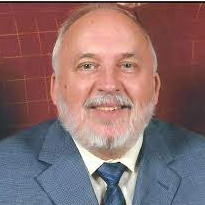Quantum Nonstationary Systems
A special issue of Entropy (ISSN 1099-4300). This special issue belongs to the section "Quantum Information".
Deadline for manuscript submissions: closed (30 June 2023) | Viewed by 13726
Special Issue Editor
Interests: quantum physics; cavity electrodynamics; quantum closed and open systems with time-dependent parameters; uncertainty relations in quantum mechanics; nonclassical states of light in quantum optics
Special Issues, Collections and Topics in MDPI journals
Special Issue Information
Dear Colleagues,
Although time-dependent quantum systems have been studied since the very beginning of quantum mechanics, they continue to attract the attention of researchers, and almost every decade new important discoveries or new fields of application were made. Among the impressive results or by-products of these studies, one should note the discovery of the path integral method in the 1940s, coherent and squeezed states in the 1960–70s, quantum tunnelling in Josephson contacts and SQUIDs in the 1960s, the theory of time-dependent quantum invariants in the 1960–70s, different forms of quantum master equations in the 1960–70s, the Zeno effect in the 1970s, the concept of geometric phase in the 1980s, decoherence of macroscopic superpositions in the 1980s, quantum non-demolition measurements in the 1980s, dynamics of particles in quantum traps and cavity QED in the 1980–90s, and time-dependent processes in mesoscopic quantum devices in the 1990s. All these topics continue to be the subject of many publications.
Now we are witnessing a new wave of interest in quantum non-stationary systems in different areas, from cosmology (the very first moments of the Universe) and quantum field theory (particle pair creation in ultra-strong fields) to elementary particle physics (neutrino oscillations). A rapid increase in the number of theoretical and experimental works on time-dependent phenomena is also observed in quantum optics, quantum information theory and condensed matter physics. Time-dependent tunnelling and time-dependent transport in nano-structures are examples of such phenomena. Another emerging direction of study, stimulated by impressive progress in experimental techniques, is related to attempts to observe the quantum behavior of macroscopic objects, such as mirrors interacting with quantum fields in nano-resonators. Quantum effects manifest themselves in the dynamics of nano-electromechanical systems; they are dominant in the new field of circuit QED. Another rapidly growing research field is the quantum control of evolution at the microscopic level. These examples show that quantum non-stationary systems continue to be a living and very interesting part of quantum physics.
We invite researchers interested in the areas described above to submit contributions to this Special Issue. Topics of primary interest include (but are not limited to):
- dynamics of quantum systems in the presence of dissipation;
- dynamics of decoherence;
- dynamics of quantum entanglement;
- dynamics of optomechanical systems;
- dynamical Casimir effect and its analogs;
- dynamics of wave packets;
- time-dependent scattering and tunnelling;
- quantum speed limits and energy-time uncertainty relations;
- quantum effects in nonstationary environments;
- quantum invariants in systems with time-dependent parameters;
- exact and approximate solutions in quantum mechanics with time-dependent parameters
Prof. Dr. Viktor Dodonov
Guest Editor
Manuscript Submission Information
Manuscripts should be submitted online at www.mdpi.com by registering and logging in to this website. Once you are registered, click here to go to the submission form. Manuscripts can be submitted until the deadline. All submissions that pass pre-check are peer-reviewed. Accepted papers will be published continuously in the journal (as soon as accepted) and will be listed together on the special issue website. Research articles, review articles as well as short communications are invited. For planned papers, a title and short abstract (about 100 words) can be sent to the Editorial Office for announcement on this website.
Submitted manuscripts should not have been published previously, nor be under consideration for publication elsewhere (except conference proceedings papers). All manuscripts are thoroughly refereed through a single-blind peer-review process. A guide for authors and other relevant information for submission of manuscripts is available on the Instructions for Authors page. Entropy is an international peer-reviewed open access monthly journal published by MDPI.
Please visit the Instructions for Authors page before submitting a manuscript. The Article Processing Charge (APC) for publication in this open access journal is 2600 CHF (Swiss Francs). Submitted papers should be well formatted and use good English. Authors may use MDPI's English editing service prior to publication or during author revisions.






